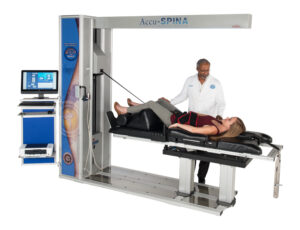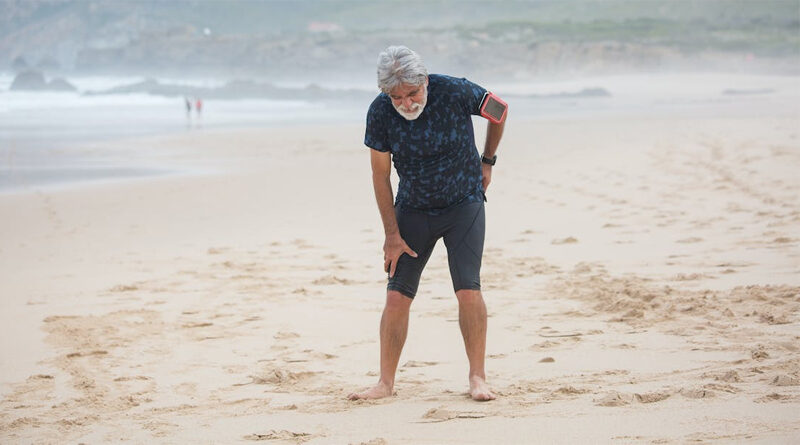UNRESOLVED BACK PAIN
Unresolved back pain can either mean that we have back pain, but as can be the case for a broken fence, it remains unresolved because we have put off doing something about it! Or, the other type of unresolved back pain is where pain persists but we have tried all manner of treatments and exercise programmes, pain management and even injections or surgery and yet still the pain persists.
As a clinician, back pain is by far the number one reason people come to see me. The same applies generally to osteopathy and chiropractic. We see people with back pain who fall into both categories of unresolved pain.
Depending on the nature of the problem, in practically all cases something can be done to help people; from manual therapy and exercise, to more advanced treatments such as IDD Therapy spinal decompression.
Help my back hurts!
There can be a variety of causes of back pain. Of course, a traumatic injury from falling off a ladder or a car accident can create an instant problem, but in most cases the causes of the back pain have built up over time.
In the same way that if we have not run for years and attempt to sprint at a school sports day, we can often create a minor or even a major problem when our physical condition is unable to deal with demands we place upon it!
People are often amazed that a small movement, like bending down to pick up a pencil, can cause real pain. But equally gardening in spring or decorating the ceiling in the spare room can put enough strain on a weakened condition to cause a painful reaction.
The less we move, the more our muscles weaken. The less we move, the more we lose flexibility in the joints as the tissues around them become stiff or tight. Sitting all day, slouching and generally not moving as much means that when we do stretch or twist or bend over incorrectly to lift something, we can strain our spine or, we can trigger a protective response in our body which causes it to lock up in a spasm. That protective mode is very painful.
There can be inflammation if there is minor injury to soft tissues (muscle) and the inflammation can irritate nerves and cause further pain.
Manual Therapy and Exercise
As a clinician, often the first task we must perform is to gently encourage the body to release the spasm and then work on the stiff joints and tight muscles. When somebody has back pain, they think the problem is in their back. However, the reason the back has a problem, is often due to problems elsewhere.
Our bodies work as a single unit. So, if we sit for prolonged periods for example, the muscles in our hips (hip flexors) can become tight. Or again through sitting and lack of movement, the hamstring muscles in the back of our legs can lose length and this combination changes our posture and put undue strain on our backs.
We all hear a lot about core muscles and patients tend to roll their eyes at the first mention of “core”. There is some debate about the importance of core muscles, but these are the deep muscles in our abdomen which support the spine and, in some ways, push the spine back and keep it in place. This isn’t the “six pack” muscles and we don’t need such aspirations to have a healthy spine, thank goodness.
So, in most cases where pain hasn’t been addressed for a long period, we begin by easing the tightness around the painful area and then we examine the tissues which connect the body as a whole.
Patients often equate “exercise” with images of army drill sergeants and boot camps. The reality is that in the time it takes to read some social media posts on a phone, we can all do some exercises which have a dramatic impact on our spinal health. And whilst we are interested in spinal health, any exercise and being pain free means we can do so much more besides and live life with a smile on our faces.
But I am still in pain!
The second category of unresolved pain is when manual therapy and exercise haven’t brought about change. It is always good to get a second opinion if one practitioner is not able to address the problem. However, some conditions can be more challenging.
A “slipped disc” or the correct term is a “bulging” or “herniated” disc is a common category of back, neck and nerve pain which can persist and have a significant impact on someone’s life.
The intervertebral disc is a spongy like shock absorber which sits between the bones of our spine (vertebrae). If we think of the vertebrae in the spine like a stack of cotton reels, the discs in between are like mini-donuts which can be squashed in all directions. This is why we can bend to the side, backwards and forwards as well as twist.
As we get older the disc walls can become weaker. These days the number one enemy of the disc is the way we sit and slouch. Poor posture and a lack of activity puts a lot of pressure on the disc which is unable to stay healthy and recover adequately from this slow bombardment. Over time the discs can weaken and become vulnerable.
Sudden or small movements can cause the toothpaste-like centre of the disc to push out and cause the walls of the disc to bulge. In some cases, the centre of the disc can push out through the disc wall itself. At any given time, we may have slight bulges in our discs and the body has a natural correction and healing mechanisms, so it isn’t a problem. Movement or rather, correct movement, is especially beneficial for disc health.
However, if the bulging disc wall presses against a nerve as it exits the spine, the result can be shooting pain or dull aching pain. If the centre of the disc pushes out through the wall, then the pain can be especially intense and cause additional chemical irritation to the nerves as the area becomes inflamed.
Such a disc bulge usually happens at the bottom of the spine and this is the area where nerves leave the spine and travel down through the buttocks to control the legs. This sciatic nerve is a source of real pain, and even agony, for some people and the pain condition is called sciatica.
When the body picks up a sense that it is injured, it can go into spasm. The spasm is like a cramp sensation and the muscles lock-up thinking they need to prevent further movement and possible further damage. This, in itself, is incredibly painful and combined with nerve pain, is doubly bad.
Physical therapy can address most cases of sciatica caused by a bulging or herniated disc. The body has its healing mechanisms, and a skilled practitioner will work to relieve the muscle spasm and then work on tissues to free movement, whilst gentle exercises strengthen supporting muscles.
Over a series of treatments pain can subside and, gradually, normal movement returns.
IDD Therapy Spinal Decompression
When a condition has built up over a long time, the tissues around the spine can become extremely stiff and immobile. The discs in our spine rely on movement to replenish fluid and nutrients but if the joints become compressed, which is compounded by pain, then it can be very challenging to restore mobility and function to help the disc.
IDD Therapy is a computer-controlled spinal decompression treatment which practitioners use to decompress the affected spinal segments. This non-surgical treatment sees patients lie fully clothed on the table of the Accu SPINA machine.
They are connected to the machine by ergonomic pelvis and chest harnesses and then a gentle force pulls the pelvic harness at a precise angle. The way in which the force is applied means that we can take pressure off the affected spinal segment and importantly, gently stretch and work the tissues. This is done through a series of stretching cycles to help release muscle spasm and improve mobility.
Patients have a series of twenty-five minute sessions on the Accu SPINA machine. IDD Therapy treatment is combined with hands on treatment and exercise, again to help address some of the other underlying causes which led to the problem manifesting in the first place.
By decompressing the disc, restoring mobility and taking pressure off nerves, patients can make significant improvement and return to a pain free life.
Pain Management
There are of course many causes of pain. Age-related back pain from conditions like arthritis can lead to restricted movement. Sadly, in some cases we must not set our expectations too high about the degree of improvement that can be achieved.
However, some improvement can usually be obtained with gentle activity and hands-on treatment in order to give relief, and to preserve and maintain function, i.e. to prevent further deterioration.
Pain management is a term to describe where pain persists and, usually, pain medication or injections are given. A pain consultant will discuss the available options depending on the severity of the pain. Pain medication can help ease pain and ideally provide a means to get some improved activity levels.
Whilst not desirable, some conditions are only currently served with pain management through medication.
Surgery
Spinal surgery has an important place in spine care. It is generally given as a last resort and most orthopaedic surgeons and neurosurgeons will only operate when all other non-invasive options have been exhausted.
Surgeons will not typically operate for non-specific back pain and will usually only intervene when the pain is severely impacting on a patient’s life and or it is causing weakness; loss of balance or loss of bladder/ bowel control.
When surgery is the required treatment route, the surgeon will advise on a course of rehabilitation after the surgery to give the best possible long-term outcome.
End Note
Back pain can affect us all and it is rare that anyone gets through life without an episode or two of pain. Most unresolved pain can usually be resolved; it is case of undoing and correcting the causes which created the problem.
When pain persists despite hands-on treatment and exercise, IDD Therapy can make a big difference for patients without the need for surgery or pain management. There are of course those conditions which are best suited to, or require, surgery or careful management with pain medication. The key, is always, to take action and not leave pain untreated.
No clinician has the answer for every patient who comes before them. If you are still in pain, never be afraid to seek a second opinion because a different set of eyes will always look at a problem through the lens of different experiences and knowledge.
ABOUT THE AUTHOR
 Michael Furlong is the Clinic Director of Balance Health Centre in Liverpool. An Osteopath for over twenty years, Michael is passionate about spine care. When IDD Therapy resolved his own herniated disc, which was threatening to stop him from working, Michael brought IDD Therapy to his clinic to complete a comprehensive non-surgical spine care service.
Michael Furlong is the Clinic Director of Balance Health Centre in Liverpool. An Osteopath for over twenty years, Michael is passionate about spine care. When IDD Therapy resolved his own herniated disc, which was threatening to stop him from working, Michael brought IDD Therapy to his clinic to complete a comprehensive non-surgical spine care service.
‘Intervertebral Differential Dynamics’ or IDD Therapy is the fastest growing non-surgical spinal treatment for intervertebral discs with over 1,000 clinics worldwide and 40 clinics across the UK. Safe, gentle and non-invasive, IDD Therapy helps patients who need something more for their pain when manual therapy alone is insufficient to achieve lasting pain relief.
Web: iddtherapy.co.uk/
Facebook: IDDtherapy
Twitter: IDDTherapyDisc

